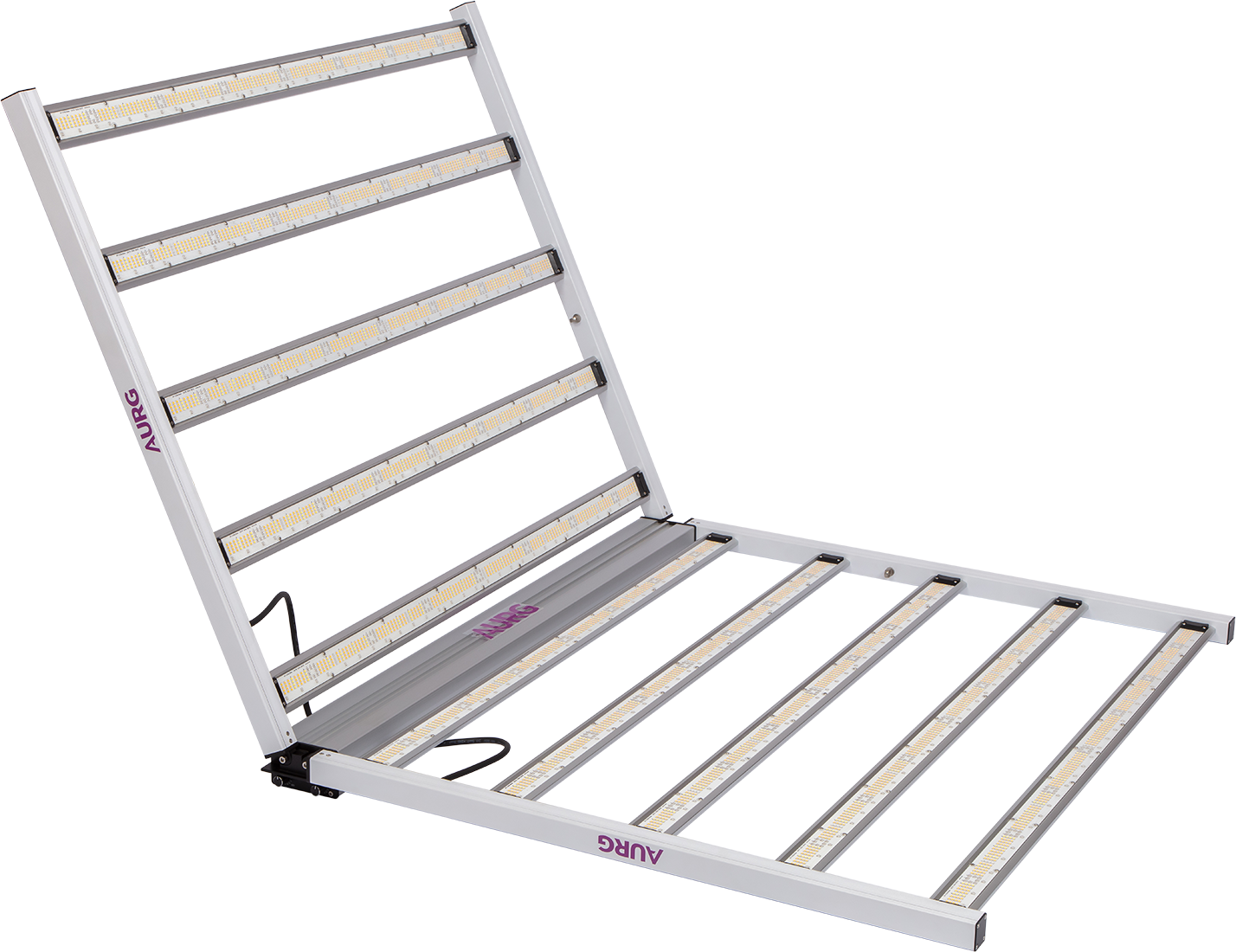Do LED Lights Grow Plants?
LED lights have become one of the most important tools in modern indoor horticulture. Whether used in home gardening, greenhouse cultivation, or commercial vertical farming, they offer plant growers precise control over light intensity, spectrum, and energy consumption. The question most growers ask first is simple: Can LED lights actually grow plants? The short answer is yes—high-quality LED systems are fully capable of supporting photosynthesis, vegetative growth, flowering, and fruiting. Unlike traditional fixtures, LEDs deliver targeted wavelengths that plants can absorb efficiently. Professional horticultural LEDs—such as those offered by AURG’s AURG LED grow lighting solutions—are engineered specifically to meet the biological needs of different plant species, ensuring optimal results across growth stages.
1. Why Plants Respond to LED Light: The Science Behind Growth
Plants rely on light to perform photosynthesis, the process that converts light energy into sugars and biomass. The effectiveness of any light source is determined by its spectrum—meaning the wavelengths it emits. Plant photoreceptors primarily absorb light in the blue (around 450 nm) and red (around 660 nm) regions. Many older lighting systems produce broad or inefficient spectra, wasting energy on wavelengths plants do not use effectively.
LED technology solves this issue by allowing manufacturers to tune the spectrum precisely. This means each diode on the array contributes specific photons beneficial to plant metabolism. The result is more efficient energy use and more predictable growing conditions. High-performance LEDs, including the horticultural modules in AURG LED grow lighting solutions, are designed to match plant absorption peaks closely. When the spectrum aligns with plant biology, growth occurs naturally even without sunlight, which is why LED grow lights are now a core component of indoor agriculture.
2. How LED Lights Support Different Growth Stages
Plants do not require the same spectrum or intensity of light during every stage of development. Seedlings benefit from gentle, cool-white or blue-heavy spectra, while mature plants respond better to stronger red wavelengths that support flowering and fruiting. LED grow lights can adapt to these needs more easily than fluorescent, HID, or incandescent options.
A balanced LED spectrum can support multiple phases at once, allowing growers to cultivate leafy greens, herbs, or ornamentals without constantly changing fixtures. More advanced LED grow systems, such as those available through AURG LED grow lighting solutions, offer spectrum customization or multi-channel control so growers can adjust the lighting profile depending on the plant’s life cycle. When the right spectrum is applied consistently, plants develop stronger stems, deeper root systems, and healthier foliage.
3. The Advantages of Using LED Lights for Plant Growth
LEDs offer several key advantages that make them a superior choice for indoor horticulture. One of the most significant is energy efficiency. Because LEDs consume less power while delivering targeted wavelengths, they produce more usable light per watt than traditional grow lamps. LEDs also generate significantly less heat, which reduces cooling demands and lowers the risk of damaging delicate foliage.
Key benefits include:
Energy efficiency: LEDs convert a higher percentage of electricity into usable light.
Low heat output: Plants can grow closer to the fixture without burning.
Long lifespan: Many LEDs provide 30,000–50,000 hours of operation.
Precise spectrum control: Light can be tailored to plant needs at each stage.
Modern form factors: Slim, lightweight designs fit shelves, grow tents, or vertical racks.
These advantages make LED grow lights suitable for everything from hobby gardens to commercial-scale operations. Reliable, high-output models—such as those from AURG LED grow lighting solutions—are engineered to deliver consistent, high-intensity photosynthetically active radiation (PAR), ensuring stable performance across long cultivation cycles.
4. Choosing the Right LED Light for Successful Plant Cultivation
While LEDs can indeed grow plants, choosing the correct fixture determines the final outcome. Not all LED lights are designed for horticulture. Standard household LEDs lack the spectrum, intensity, and photon output required for photosynthesis. Growers must select fixtures with verified PAR efficiency, appropriate beam spread, and a spectrum designed for plant development.
When evaluating LED grow lights, consider:
Light intensity (PPFD): Ensures plants receive adequate photosynthetic photons.
Spectrum: Determines whether the fixture supports veg, bloom, or full-cycle growth.
Coverage area: Aligns fixture size with the grow space.
Heat management: LEDs require proper thermal design to maintain lifetime and efficiency.
Power consumption: Helps estimate electricity use and long-term costs.
Professional fixtures from AURG emphasize these criteria, offering horticultural LEDs that balance efficiency, spectrum accuracy, and durability. Their AURG LED grow lighting solutions include full-spectrum options for continuous cultivation or specialized spectrums ideal for targeted production environments.
5. Practical Applications: How LED Grow Lights Fit Into Indoor Farming
LED grow lights have transformed how plants are grown indoors. They enable cultivation in environments where natural sunlight is limited or inconsistent. LED fixtures can be integrated into small home systems, vertical farms, climate-controlled greenhouses, biotechnology labs, or hydroponic rooms. Their adaptability makes them suitable for a wide variety of plant species, including leafy greens, microgreens, herbs, ornamentals, and even fruiting plants like tomatoes or peppers.
In commercial settings, LEDs support:
Vertical farming: Slim-profile fixtures illuminate stacked layers efficiently.
Controlled-environment agriculture: Spectrum and timing can be fine-tuned for maximum yield.
Propagation rooms: Gentle LED light helps clones and seedlings establish faster.
Research labs: Precise spectral outputs help test growth responses scientifically.
These applications highlight why LED lights are now a standard component of modern plant production. High-quality LED arrays, such as those manufactured under the AURG LED grow lighting solutions line, provide the reliability needed for continuous operation, stable photon output, and consistent harvests.
6. Why LEDs Are a Proven Solution for Growing Plants
LED technology has advanced far beyond basic household lighting. Today’s horticultural LEDs deliver exceptional spectral precision, stable photon output, and energy-efficient operation tailored for plant biology. They not only support but often outperform traditional grow lights in yield, quality, and growth uniformity. With the ability to fine-tune wavelengths, maintain consistent PPFD levels, and reduce operational costs, LED grow lights have become a foundational tool for growers of all scales.
Reliable LED lights—like those in the AURG LED grow lighting solutions portfolio—offer growers predictable results, lower long-term expenses, and impressive versatility across plant species. As indoor farming expands globally, LEDs remain one of the most effective and scientifically supported methods for providing plants with the light they need to thrive.
Summary
Yes, LED lights can grow plants—effectively, efficiently, and consistently. Their targeted spectrum, low heat output, and operational longevity make them ideal for indoor horticulture. LEDs support every stage of plant growth and adapt to various cultivation environments, from small home gardens to commercial vertical farms. Using high-quality fixtures engineered for plant biology, such as AURG LED grow lighting solutions, ensures stable illumination, strong plant development, and reliable yields. LEDs continue to shape the future of controlled-environment agriculture by providing growers with precision lighting that maximizes plant performance.




